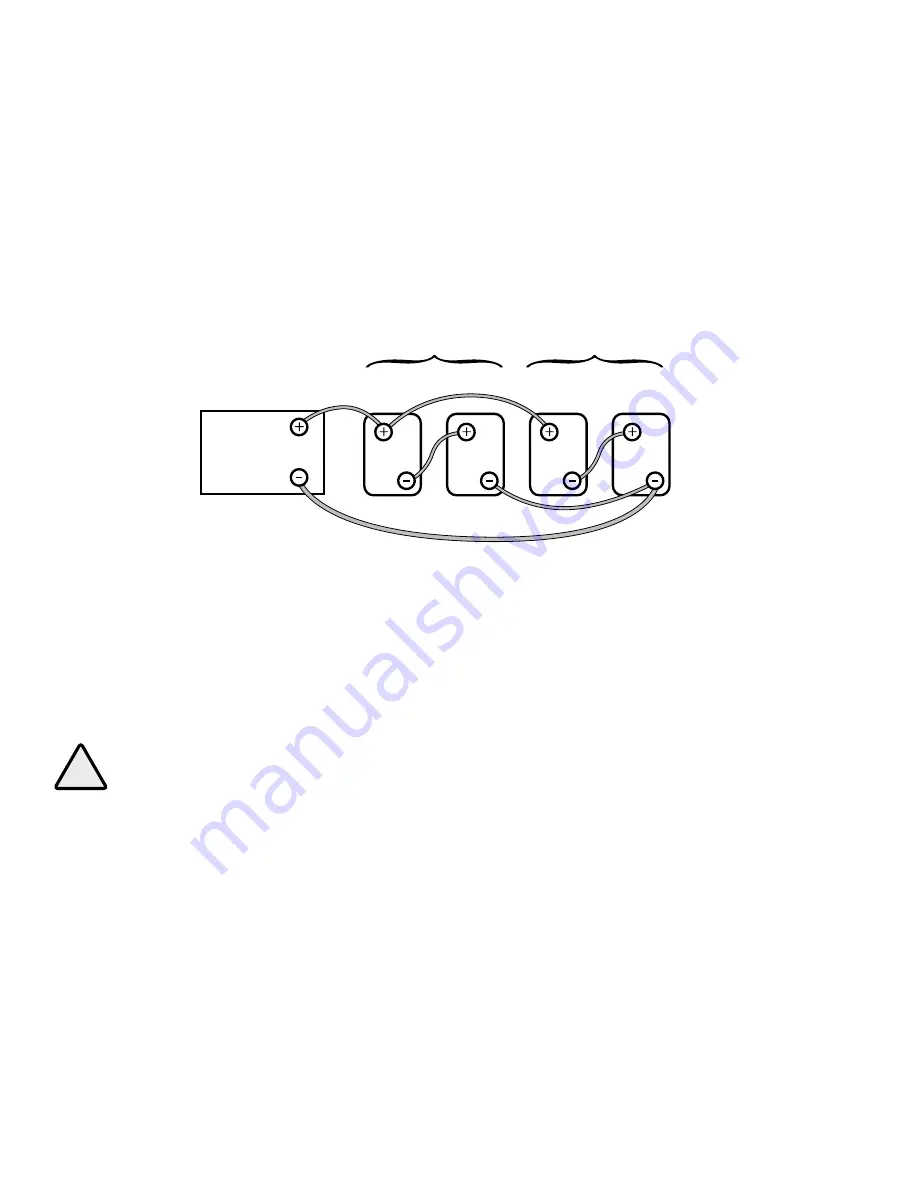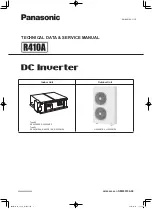
SAMLEX AMERICA INC. | 35
SECTION 7 |
General Information on Lead Acid Batteries
When two or more batteries are connected in parallel, their voltage remains the same but their Ah
capacities add up. Fig. 7.3 shows 4 pieces of 48V, 100 Ah Battery Banks connected in parallel to form a
battery bank of 48V with a capacity of 400 Ah. The four Positive terminals of Batery Banks 1 to 4 are
paralleled (connected together) and this common Positive connection becomes the Positive terminal of the
48V bank. Similarly, the four Negative terminals of Battery Banks 1 to 4 are paralleled (connected together)
and this common Negative connection becomes the Negative terminal of the 48V battery bank.
7.14.3 Series – Parallel Connection
24V*
200 Ah
48V String 1
48V String 2
24V
Battery
Bank 1
24V
Battery
Bank 3
24V
Battery
Bank 4
24V Battery
Bank 2
24V*
200 Ah
24V*
200 Ah
24V*
200 Ah
* NOTE: Each of the 24V, 200 Ah Battery Banks may be (i) 2x 12V, 200 Ah batteries in series, or
(ii) 4x 6V, 200 Ah batteries in series
48V Inverter
or 48V Charger
Cable “A”
Cable “B”
Fig. 7.4: Series-Parallel Connection
Figure 7.4 shows a series – parallel connection consisting of four 24V, 200 Ah Battery Banks to form a 48V,
400 Ah battery bank. Two 24V, 200 Ah Battery Banks 1 and 2 are connected in series to form a 48V, 200 Ah
Battery Bank (String 1). Similarly, two 24V, 200 Ah Battery Banks 3 and 4 are connected in series to form
a 48V, 200 Ah Battery Bank (String 2). These two 48V, 200 Ah Strings 1 and 2 are connected in parallel to
form a 48V, 400 Ah bank.
!
CAUTION!
When 2 or more batteries / battery strings are connected in parallel and are then connected to
an inverter or charger (See Figs 7.3 and 7.4), attention should be paid to the manner in which the
charger / inverter is connected to the battery bank. Please ensure that if the Positive output cable
of the battery charger / inverter (Cable “A”) is connected to the Positive battery post of the first
battery bank (Battery Bank 1 in Fig 7.3) or to the Positive battery post of the first battery string
(Battery Bank 1 of String 1 in Fig. 7.4), then the Negative output cable of the battery charger /
inverter (Cable “B”) should be connected to the Negative battery post of the last battery bank
(Battery Bank 4 as in Fig. 7.3) or to the Negative Post of the last battery string (Battery Bank 4 of
Battery String 2 as in Fig. 7.4). This connection ensures the following:
- The resistances of the interconnecting cables will be balanced.
- All the individual batteries / battery strings will see the same series resistance.
- All the individual batteries will charge / discharge at the same charging current and thus, will be
charged to the same state at the same time.
- None of the batteries will see an overcharge condition.
















































